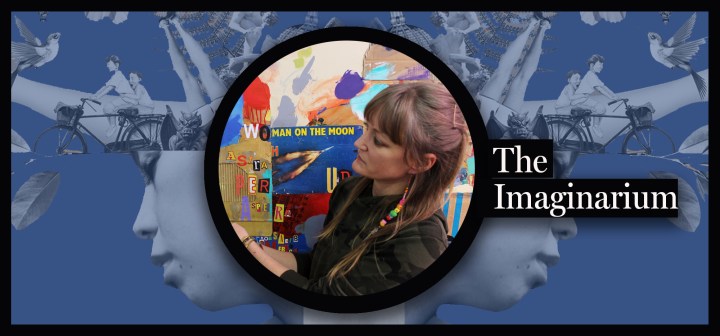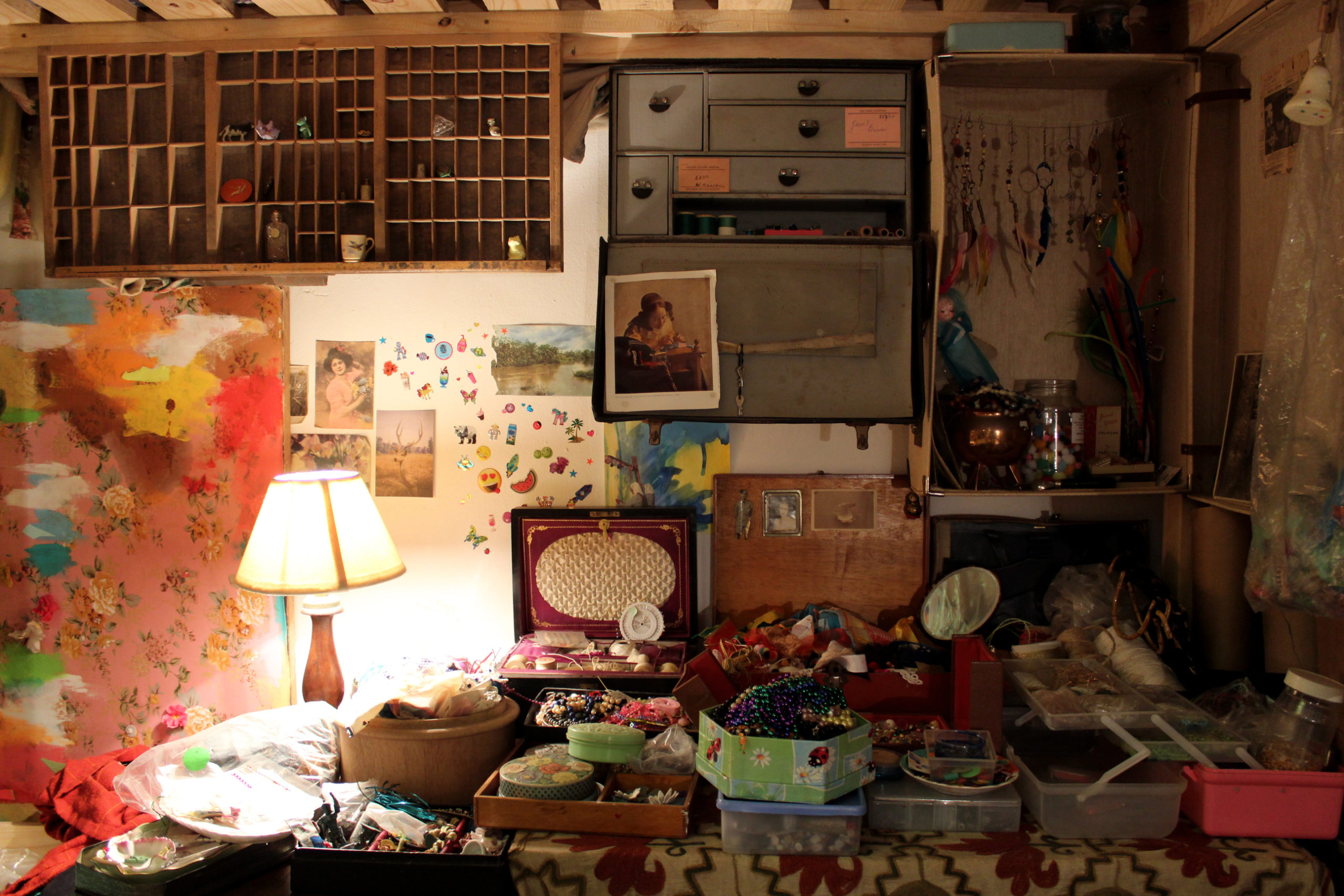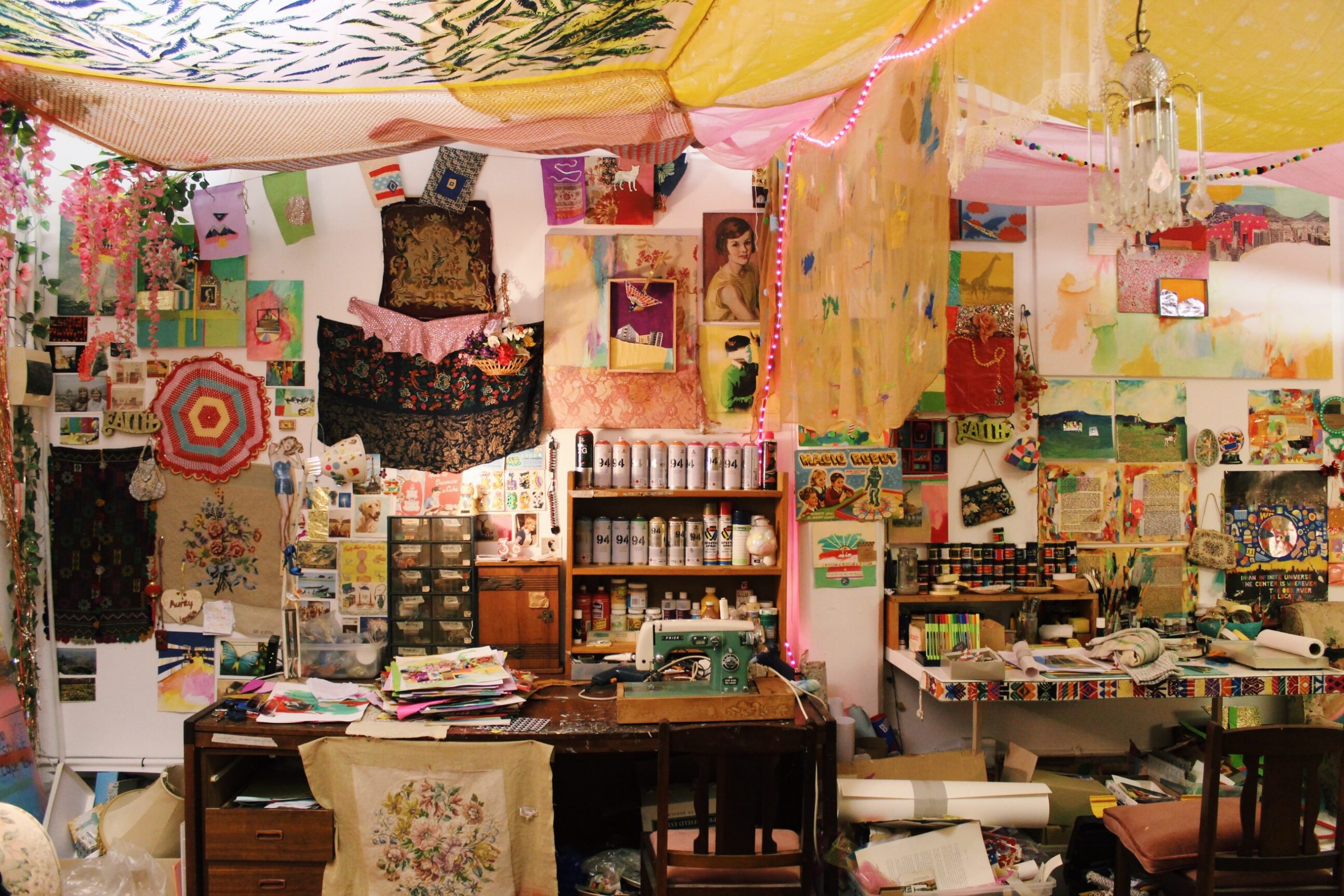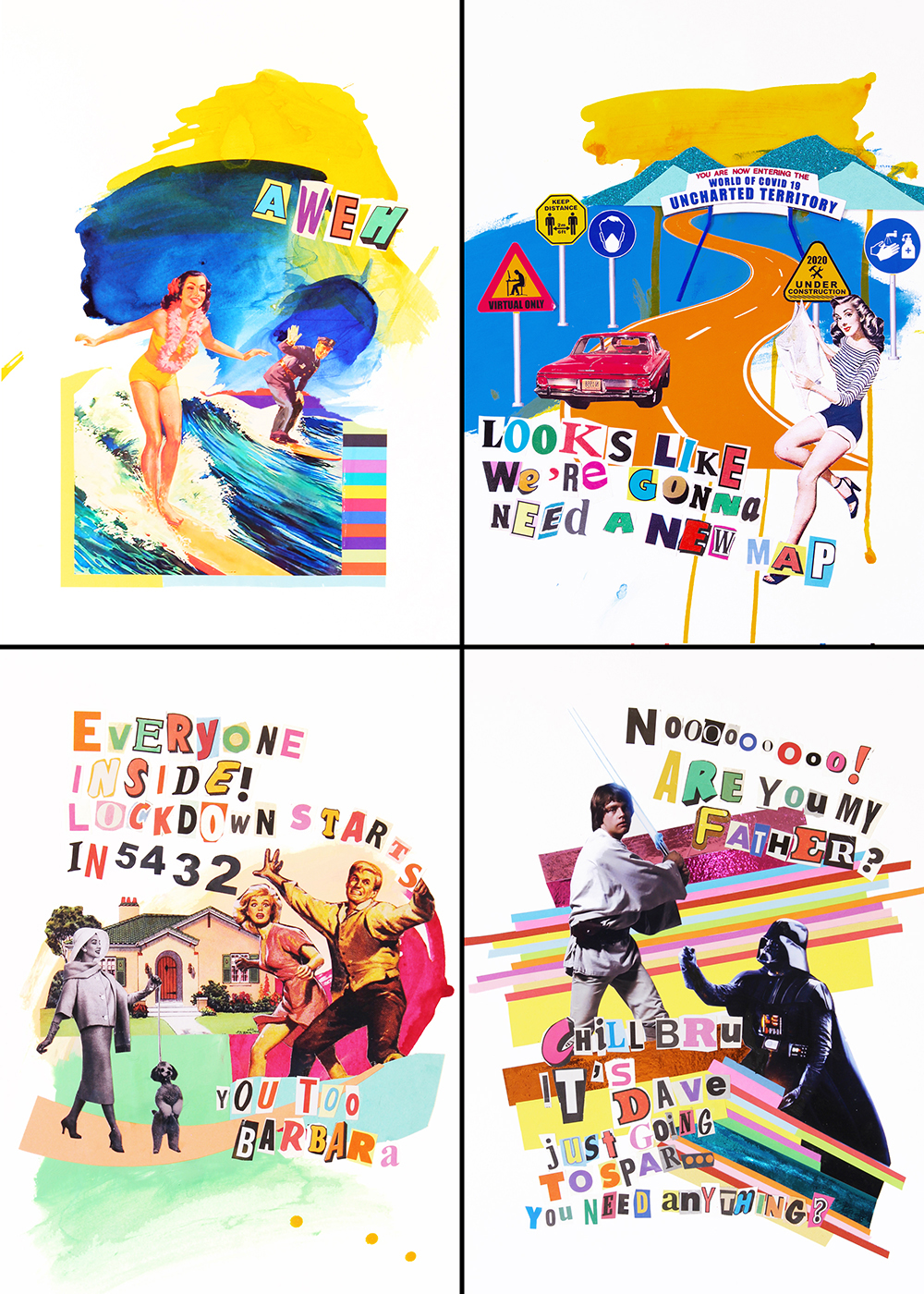THE IMAGINARIUM
Assemblage and pique-assiette mosaic: How Julia Grey uses scavenged materials to illustrate life

‘My work deals with socio-political themes and psychological-spiritual growth. I use art as a vehicle to contain emotional processing, often making use of a “personal is political” approach’, says Cape Town-based artist Julia Grey.
In an article dubbed ‘The psychology of home: Why where you live means so much”, published in The Atlantic in 2011, Julie Beck refers to environmental psychologist Susan Clayton, who says that “for many people, their home is part of their self-definition”. And in his 2001 book, Snoop, what your stuff says about you, American psychologist Dr Sam Gosling explored “our private worlds” to show how much they can tell us about who we are; it’s often revelatory: here, a pile of books baring something about our identity; there, postcards that tell the tales of faraway journeys and personal memories.
If spaces do indeed say something about who we are, then Cape Town-based visual artist and author Julia Grey’s studio is a metaphor for a life full of colours and objects; a phantasmagoria of sorts, where the world would have been cut into a million pieces and glued back onto the walls and ceilings into a wild patchwork, next to ribbons, Chinese lanterns, books, records, and strips of fabrics. An Ali-Baba’s cave if Ali-Baba was an artist more interested in treasures made of creative mosaics and collages, than gold.

Julia Grey’s studio (Image courtesy of the artist)

Julia Grey’s studio (Image courtesy of the artist)
Grey is a gatherer of things, a collector of “abandoned and scavenged materials”. She started to develop her style when she was a teenager, using journals as her canvases. At art school, she turned her fascination with collecting into large-scale collage walls. She graduated from the Michaelis School of Fine Art (UCT), with a BA in Fine Art in 2003. Two years later, she had published her first book, Cape Town, An Illustrated Poem (Struik Publishing) “which is a full colour art journal about the city in which I was raised”, she says.

“The book was a work of self-discovery that depicts the visuals, questions and growing pains of a young white person coming of age during the South African transition. It was a snapshot of a particular moment in time for me, documenting the early days of our democracy and the questions I had around place, belief and belonging. The requisite self-inquiry around my own positionality was only beginning back then. In the years subsequent to the book’s release, I have lost myself and found myself, again and again, in the attempt to develop an appropriate sense of self in relation to my subject position as a white South African.” She has just finished completing her second book, another visual journal, this time focusing on psychosis and mental health.
During the Covid-19 lockdown, Grey created a series of collages using paint and found imagery. Here again, the concept of ‘things’ as an extension of who we are, or of our thought process, seems evident – as she documented life in lockdown, Grey used visual clues from the ‘suburban’ housewife of the ‘50s, as a tool to illustrate her adjustments to the regulations newly put in place.

Collages (Image courtesy of Julia Grey)

Collages (Image courtesy of Julia Grey)

Collages (Image courtesy of Julia Grey)

Collages (Image courtesy of Julia Grey)
“In my own way, I have documented the process of a world that is coming to terms with the existence of coronavirus and the adjustment to our lifestyles that the virus has entailed,” she explains.
The result? Bright and colourful collages of vintage images mixed with modern commentary – mainly white women from the ‘50s, hair and apron in place, trapped in lockdown life version 2020. Grey shared the images on Instagram and on her website.
“I’ve tried to keep things light and humorous for the people following me on Instagram – a bit of brightness to keep perspective during a psychologically difficult time. It is a departure from my usual work; to create quickly and daily, keeping a lightness of touch and not working with the usual gravitas and preciousness that often exists in the rest of my art practice.
“I’ve used the words ‘lightly satirical’ to describe this series because strong satire, in my mind, has a more severe critique of power structures. What I’ve created feels relatively subtle,” she adds.
The use of imagery from vintage advertising serves “to place [her] voice and humour within a specific gamut.
“The 1950s’ white suburban housewife functions as an avatar for a particular sort of voice. She is a woman I know, a woman that belongs to my demographic, a woman that might have been my grandmother and a woman I feel in a comfortable position to joke about. She allows me to make use of a particular lens and doesn’t pretend to speak on behalf of everyone. There are limits to what she can say and where her humour (or my humour about her) will resonate,” Grey explains.
The artist also points out that she was trying to navigate the constant overflow of information and was struggling to get specific answers – choosing to rather “stay open and flow with the uncertainty”.
In fact, her humorous collages resonated with people who, like all of us, had been cut from social interactions and what Grey calls a type of “social mirroring”.
“Art can be helpful as a means of grounding difficult and lonely processes. Usually, when we move through the world, we experience some form of social mirroring that reminds us of the collective or community to which we belong: we say hello to a colleague, tell someone about our day, perform some task that is part of a greater societal machinery, meet a friend for coffee, etc.
“For many people during hard lockdown, there were far fewer moments of relational mirroring which meant that our worlds became very internal. On one level this was a good time for self-reflection but, on another level, living without external feedback has the potential to destabilise one’s mental health. I think creative content played such an important role during this time when there was very little else to bounce off. I certainly found moments of respite in the content of local comedians who were sharing their own lockdown experiences and reminding me that I was not alone.” DM/ ML
To discover more of Julia Grey’s work, check her website.

















 Become an Insider
Become an Insider